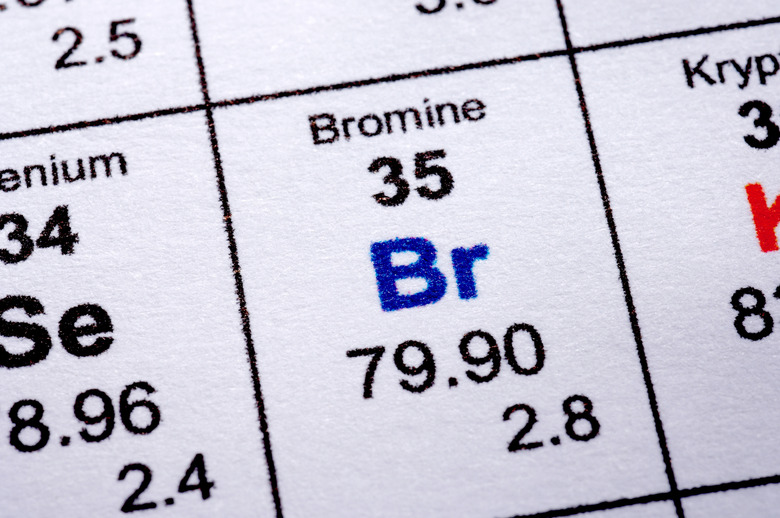Which Halogen Has The Least Attraction For Electrons?
The halogens are reactive chemical elements found in Group 17 of the Periodic Table. Listed by increasing size and mass, they are: fluorine, chlorine, bromine, iodine and astatine. Fluorine has 9 electrons, chlorine has 17, bromine has 35, iodine has 53 and astatine has 85. The larger the atom, the weaker the attraction for electrons is.
Attraction and Coulomb's Law
Attraction and Coulomb's Law
As electrons in an atom increase in number, the atomic radius increases. The bonding of charges, such as those found in the atom, obey the mathematical relationship known as Coulomb's Law,
F = K· Q₁Q₂ / R² = K·Q² / R²
Where F is the force of attraction between particles, K is a constant, Q is the charge of both the proton and the electron and R is the distance apart on average. From this equation it is seen, the larger an atom is the weaker the attraction for electrons is.
Additional Factors
Additional Factors
All of an atom's positive charge is at its center. Electrons closer to the center are held more tightly as proton number increases. However, outermost electrons are held less tightly because inner electrons shield them. For this reason, it is astatine that has the least attraction for its outer electrons. It also has the least tendency to gain more.
Cite This Article
MLA
Summers, Vincent. "Which Halogen Has The Least Attraction For Electrons?" sciencing.com, https://www.sciencing.com/halogen-least-attraction-electrons-8365/. 24 April 2017.
APA
Summers, Vincent. (2017, April 24). Which Halogen Has The Least Attraction For Electrons?. sciencing.com. Retrieved from https://www.sciencing.com/halogen-least-attraction-electrons-8365/
Chicago
Summers, Vincent. Which Halogen Has The Least Attraction For Electrons? last modified March 24, 2022. https://www.sciencing.com/halogen-least-attraction-electrons-8365/
